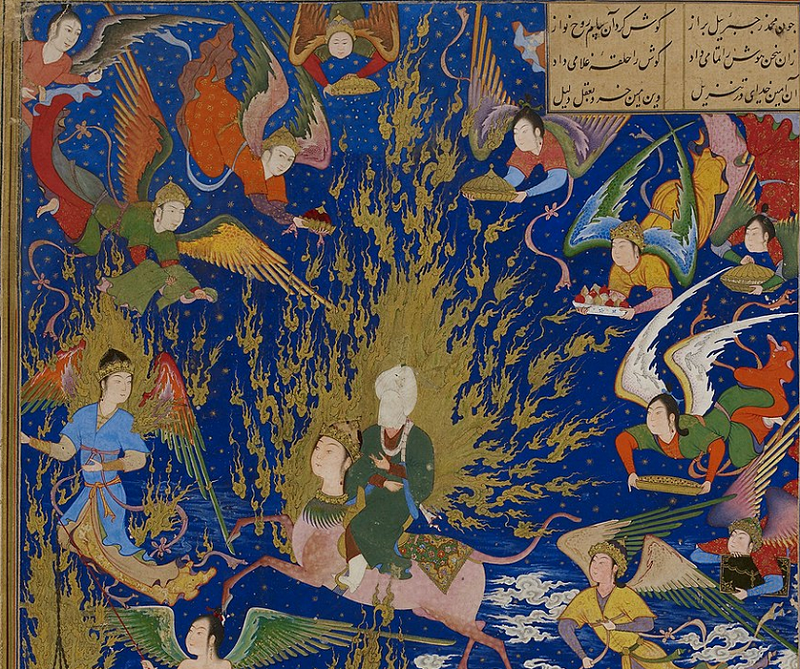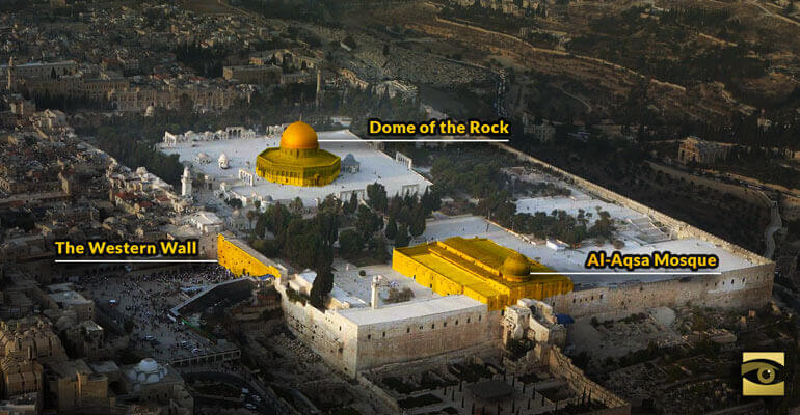THE MOSLEM MYTH OF JERUSALEM
[This Monday’s TTP Archives feature was originally published on December 3, 2003. The TTP Team is looking forward to your thoughts on the Forum, especially despite the irrefutable facts therein, nothing has changed in the two decades since.]
It is a commonplace in a story or article about the Arab-Israeli conflict that mentions Jerusalem to repeat the Moslem mantra that “Jerusalem is the third holiest city in all Islam, next to Mecca and Medina.”
You’ve heard this innumerable times — but how come? Just why is Jerusalem so important to not just Jews and Christians but Moslems as well?
The reason is one single line in the Koran.
Sura (Chapter) 17 of the Koran is called -al-Isra, the Night Journey, due to the first verse which reads:
“Praise be to him (Allah) who took his servant (Mohammed) by night (Isra’) from the Al-Haram Masjid (sacred place of prostration or mosque) to the Al-Aqsa Masjid (most distant mosque), whose environs we (Allah) did bless, so that we might show him some of our signs, for he (Allah) is the All-Hearing and All-Seeing One.”
Here is the point to be clear on: The entire claim that Jerusalem is holy to the Moslems is based on the assertion that the “most distant mosque” of the Koran’s Sura 17 was in Jerusalem.
In other words, if it could be shown that Sura 17’s most distant mosque was not in Jerusalem, then Jerusalem ceases to be a holy city to Islam.
Here’s the news, folks: an official publication of the Egyptian Government has done just that.
The journal of the Egyptian Ministry of Culture, Al Qahira, has an article by Islamic scholar Ahmad Mohammad Arafa, entitled “Was the Prophet Mohammed’s Night Journey to Palestine or Medina?”*
Arafa’s detailed analysis of Sura 17:1 shows that it had to be the latter.
Arafa starts by affirming that the Al Haram Masjid is in Mecca. — but then notes that wherever the Al Aqsa Masjid is, it can’t be in Jerusalem because at the time there was no one there who believed in Mohammed or gathered to pray at a place that served as a mosque.
In Mohammed’s lifetime (570-632), the inhabitants of what was called Palestine were Christians with a Jewish minority. Not a single person among them was Moslem. If there could not be a masjid, an Islamic place of praying and prostration, in Jerusalem during Mohammed’s lifetime, then ipso facto, Jerusalem cannot be the destination of the Night Journey.
Where then, was the Night Journey to? Arafa concludes it is Medina, 270 crow-fly miles north of Mecca (in current Saudi Arabia; Jerusalem is 500 miles further, 770 miles north of Mecca).
Isra doesn’t just mean “night.” The verbal form of it means “moving secretly by night from a place of danger to a place of safety.”
That is, Sura 17:1 relates Allah’s ordering Mohammed to travel secretly from his enemies to a place where he had converts who would protect him — which means the Night Journey actually refers to the Hejira — Mohammed’s flight from Mecca to Medina in 622 AD, Islam’s founding event which provides Year One in the Moslem calendar.
Think of what this means. The entire rationale for the Moslem claim that Mount Moriah, Jerusalem’s Temple Mount and the Jewish people’s most sacred site for 3,000 years, really belongs to them has been demolished — by a Moslem scholar.
When Arab armies conquered the Middle East after Mohammed’s death, competing Caliphs (an Islamic Pope/King) arose in Damascus and Mecca. To strengthen his claim to legitimacy, the former decreed Jerusalem, right next door to Damascus, was the destination of Sura 17:1, and built a mashhad or pilgrimage shrine on top of the ruins of Israel’s Second Temple (destroyed by the Romans in 70 AD, it was built in 515 BC and rebuilt by Herod in 34 BC).
The shrine was called Qubbut As-Sakrah, the Dome of the Rock, next to which was built a mosque, called — you guessed it — the Al Aqsa Mosque.
The formal Moslem name for the entire Temple Mount is Al Haram ash-Sharif, the Sacred Sanctuary, but the common name for the complex is simply Al Aqsa.
Note that the entire Temple Mount, where David’s son Solomon built the First Temple in the 10th Century BC and the locus of the Jewish religion for millennia, is claimed by the Moslems as theirs. All the Jews have left is what’s left of the Second Temple’s wall — the Western or Wailing Wall — at the Mount’s base.
It is time now for the Jews to reassert their claim to the Temple Mount. Any claim that Jerusalem must be the capital of a Palestinian State since it is so holy to Moslems can now be refuted. Jerusalem is properly sacred to Jews and Christians — but now it is no longer to Moslems.
*Al Qahira, August 5, 2003. Translated by the Middle East Media Research Institute, MEMRI Bulletin 564, September 2, 2003.



